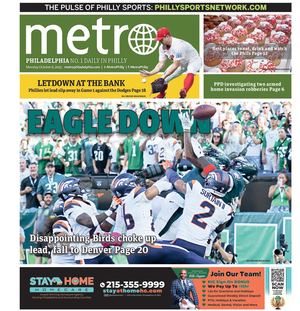For the past few decades, Toll Bros. was a name that was synonymous with the suburbs, building luxury homes that catered to those who preferred the quiet lifestyle as opposed to the hustle and bustle of city living.
But in 2012, the Horsham-based company’s portfolio is evolving to reflect the burgeoning trend of people moving back into cities. It includes major projects in cities like Philadelphia, Brooklyn, N.Y., and Hoboken, N.J.
As evidenced by 2010 Census data, the decades-long population decline occurring in many cities, including Philadelphia, has reversed, meaning developers that once focused on the outlying areas are now swallowing up land in urban territories.
“We are buyers right now,” said Brian Emmons, vice president of Toll’s City Living Brand in Philadelphia. “We are actively pursuing land in Philadelphia. We’ve got the ability to pay cash and we can close very quickly.”
Toll is constructing a 127-unit complex at 24th and South, right next to its Naval Square development, which was its first and only property in the city for several years. The project is a mix of townhomes and condominiums. The company also is set to begin construction soon on 68 condos at the NewMarket site in Society Hill.
“There’s an influx of people moving into cities to be closer to jobs, entertainment and all the other aspects of living that cities provide,” Emmons said. “They don’t need the big home anymore and they want to be close to the activities that allow them to enjoy their life.”
Toll isn’t the only major developer staking its claim in Philadelphia. The John Buck Co., based in Chicago, is building a high-rise apartment building near 21st and Chestnut streets and New York-based Jonathan Rose Companies is part of a mixed-use transit-oriented development taking shape near Temple University in North Philadelphia.
‘Shockingly easier’
Deputy Mayor for Commerce Alan Greenberger said demand is not the only factor driving developers to invest in Philadelphia.
“Not only has the demand side shifted, but as a lot of developers are finding out, building in the city is sometimes shockingly easier than building in the suburbs. This has to do with people in the city and this city getting our systems together, making them easier to use and a more development-friendly place,” he said.
Greenberger pointed to the city’s new zoning code, adopted earlier this year to update zoning classifications, and the efforts to simplify the maze within the Department of Licenses and Inspections.
Big growth downtown
The population growth in many metropolitan areas over the last few years is due to a significant increase in the number of people living downtown, according to a new report from the Census Bureau.
The report showed that between 2000 and 2010, metropolitan areas with 5 million or more people saw double-digit percent gains in their downtown areas, defined as areas within two miles of the region’s largest City Hall.
Chicago saw the biggest uptick downtown, but New York, Philadelphia, San Francisco and Washington, D.C., also posted large increases close to City Hall.
In the Philadelphia metropolitan area, which includes Camden and Wilmington, the downtown population in 2010 was 235,529, up nearly 10 percent from 2000.
The study says the main driver of the trend has been younger, white, non-Hispanics.


























